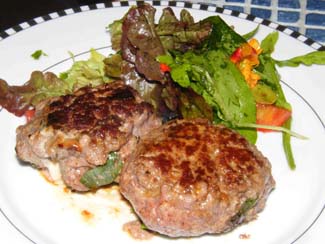Autumn Beef
.jpg) At this time of year, chefs and beef connoisseurs begin to get excited about the new autumn beef which is just coming in from local farmers. Beef may be available all year – and many consumers are unaware of it as a seasonal food, in the way that lamb is – but those in the know keenly anticipate the meaty treats which will only be available for a couple of months during the autumn.
At this time of year, chefs and beef connoisseurs begin to get excited about the new autumn beef which is just coming in from local farmers. Beef may be available all year – and many consumers are unaware of it as a seasonal food, in the way that lamb is – but those in the know keenly anticipate the meaty treats which will only be available for a couple of months during the autumn.
In north Dublin, for example, Howth butcher Ray Collier stocks the local Baily beef – finished each summer on a nearby farm – and it features on the menu at The King Sitric Fish Restaurant, where proprietor-chef Aidan MacManus takes great pride in offering a Baily Beef Tasting Menu for just a couple of weeks in the autumn, in addition to his usual wide range of seafood.
It comes from the Bellingham family farm at “The Cliffs” up at Baily, on the Howth peninsula, and supply is very limited “only about 12 or 16 cattle per year - the cattle graze free-range for the final summer of their lives, and thanks to the complex mix of grasses and plants, achieve wonderful condition and weight.”
In the same area, this year, beef from Lambay island is to be found for a limited period. Aqua Restaurant, on Howth’s West Pier, offers it on their menu for the month of September - and you can see the island from your restaurant table.
And there is a similar sense of excitement with speciality producers all around the country – down in Dungarvan, Paul Flynn, proprietor-chef of The Tannery, says “Once September comes I reintroduce my standing order from Michael McGrath in Lismore”, Paul loves this famous traditional butcher’s corned beef: “the stuff of legends”.
Co Kildare is real beef country and at Peter and Jenny Young’s organic farm near Athy, the Castlefarm Aberdeen Angus heifers have spent the summer fattening on a diet of organic grass and clover and are now ready to become autumn beef.
On a weekly basis during September and October, Jenny Young brings an animal to their local abattoir. “Our beef is hung for 21 days to maximize on flavour and tenderness. Each animal is then divided into freezer boxes and customers share the animal - each box contains a bit of everything; some steaks, some roasts, stewing beef and mince. Normally each beef box contains about 6 bags of mince, so I give out a beef burger recipe.
This is such a simple recipe but makes the point that if you use good quality meat, home-made burgers need very little else. The important thing is to use fresh, good quality mince. Homemade burgers are cheap, nutritious and so easy to make.”
 RECIPE:
RECIPE:
Castlefarm Home-made Organic Angus Beef Burgers
Click for recipe






There are currently no comments
Leave a comment
Not a member? Register for your free membership now!
Or leave a comment by logging in with: